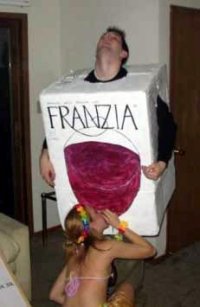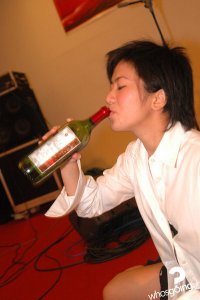Wine critics are overly fond of pronouncing the latest Bordeaux release to be a ``vintage of the century'' -- 1982, 1989, 1990, 1995. Yet since we are in the eighth year of the 21st century, I'm confident that the 2005 Bordeaux is at least the best vintage of the decade -- and with high prices to match.
The most illustrious bottlings have soared out of sight for all but the wealthiest collectors of wines. Chateau Latour is $1,600, Chateau Ausone is $4,000 and Chateau Petrus is $5,000, even though most is already presold. Bottles from less- prestigious yet still well-regarded estates like La Mission-Haut- Brion ($950), La Mondotte ($500) and L'Eglise Clinet ($450) are tough to find in the market.
Fortunately, there are an amazing number of 2005 Bordeaux priced well under $100 that share the same strengths as more famous estates. The 2005 vintage -- about 900,000 bottles -- is full of bright wines with an early balance of fruit, acid and tannin. They are very easy to drink, even now, and it is not at all clear just how much better they will be in years to come.
The reasons for 2005's excellence are not difficult to understand: Good weather counted. Yet like everyone in the global wine market in the 21st century, Bordeaux vintners have learned how to make finer wines by cutting back grape yields, picking only the best fruit, carefully monitoring aging in the proper casks from vintage to vintage, and allowing the fruit -- not the tannins or alcohol -- to shine.
Lower Profiles
Many of the wines I tasted over the last two weeks don't have high profiles, yet I found them as wonderful as Bordeaux can and should be. You taste their distinctive cabernet sauvignon, with softening elements of merlot and other varietals.
These are red wines whose virtues are dimmed by sipping them without food. With red meats, poultry and game their luster emerges, full-bodied, mineral-rich and as satisfying with the first glass as with the second and third.
Chateau Marquis d'Alesme-Becker ($34), a third-growth Margaux, has come a long way in recent years. The 2005 is a superb wine, ready for the table, with big fruit and peppery flavors beneath. At 13.5 percent alcohol, it's a wine to drink and drink again over the course of a dinner.
Another third-growth Margaux, Chateau D'Issan ($85), was tight on first sip yet blossomed quickly when served with a rare grilled steak, accentuating the flavors of the beef while showing a burst of fruit and black cherry, with an edge of oak beneath.
Velvety St.-Emilion
Chateau Fombrauge ($55), the largest vineyard in St.- Emilion, is from vintner Bernard Magrez, who also makes the famous Grand Cru Pape Clement. Fombrauge is 77 percent merlot, 14 percent cabernet franc and just 9 percent cabernet sauvignon. Unfiltered, it's a velvety, intensely rewarding, highly refined St.-Emilion. It is also one of the best buys of the vintage. If you can get a case, do so.
Chateau Rocher-Calon was the biggest surprise of my tastings -- a big, brawny St.-Emilion to be sloshed into a glass, swirled and enjoyed with a lamb stew. At $17-$20, it's an astounding bargain.
If you like soft, merlot-based Pomerols, the blend of 95 percent with 5 percent cabernet franc under the simple label Pomerol Christian Moueix ($32) is a dreamy wine for those who cannot afford Moueix's great Chateau Petrus.
I did sample some well-structured though very tannic 2005s that will take a few more years to come into focus. Sarget de Gruaud-Larose ($40-$75) from St.-Julien was one of the more tannic examples -- much like its better-known sister wine Gruaud- Larose. Those tannins are stubborn right now, requiring at least a year or two more to release their grip.
Chateau Les Gravieres ($40), a Grand Cru St.-Emilion (not to be confused with la Graviere in Pomerol), usually made with 100 percent unfiltered merlot, was so tight that I couldn't puzzle out what other flavors lay beneath the tannins. Give it five years.
Vintages like this do not come along often enough. Yet if Bordeaux viniculture continues to modernize without losing the soul of its terroir and history, we should see more outstanding vintages like 2005 than would have been possible 20 years ago.
John Mariani
skip to main |
skip to sidebar
Enhance the pleasure that you get from wine by sharing your experiences, knowledge, news articles and facts about the elixir of the gods and bacchanalia on earth by emailing: bacchusforyou@bellsouth.net
How Much Did The Best Bottle of Wine You Ever Drank Cost?
CONTACT INFORMATION
TO SUBMIT A POST, TO BE PUT ON THE MAILING LIST, TO HAVE QUESTIONS ANSWERED, ETC.
EMAIL:



